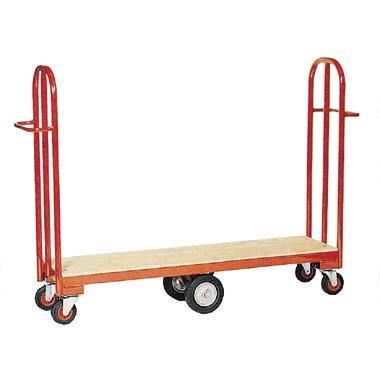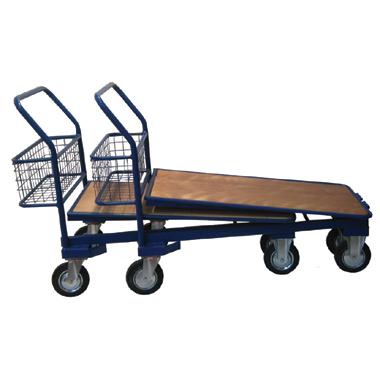
The UK's ‘Cash & Carry’ grocery wholesaling trade was first reported as starting in June 1957 with the opening of Vye and Son in Ramsgate, a subsidiary of the Home & Colonial Group. But Lawrence Batley is widely accredited as the originator of the concept in the UK and in April 1958, L. Batley & Co. of Huddersfield opened a large 30,000 sq. ft. modern cash & carry warehouse which was by far the biggest of its kind to date.
The industry continued to flourish throughout the 1960's and 70's and the term ‘cash & carry’ grew to include other consumable items such as wines, drinks, building products, imported food products and even car parts! By the 1980's the towns and cities throughout the UK were being very well served by chains and networks of service businesses calling themselves ‘cash & carrys’. Some were trade only wholesale outlets, whilst others provided their products to the general public. Today we are all able to access products and services through cash & carrys covering the whole of the UK. The term implies that goods are ‘carried out’ and paid for by ‘cash’. In essence that is still the relative notion but obviously payment methods have been radically improved with more modern payment systems becoming available and the goods are often delivered in ever more user friendly ways. However, customers still do account for self collection of 75% of goods being retailed from cash & carrys and the most popular means of collection is still by the use of the time honored cash & carry truck. The customer collects a truck from the front of the premises then proceeds to push it around the aisles whilst stacking and loading up their required provisions before moving to the payment tills. The whole process is completed when the truck is unloaded into the customer’s car or van.
So, what is a cash & carry truck? Well, there are several types available on the market today. The two most popular are the hinged platform type that allows trucks to be ‘nested’ when not in use, thus saving on floor space The other is the narrow aisle truck that is designed for use in confined areas whilst moving around tight aisle spaces. Both are very credible, well tested designs. There are however, pitfalls when buying trucks for your customers to use. There is nothing worse than providing a fleet of trucks that turn out to be a user’s nightmare. Customers will remember the quality of your trucks but more so the difficulties that they experience if they are not best suited to the task. You will hear the usual comments: “My truck moves like a crab” or “It’s easier to push an elephant up a slide than it is to push this truck”. The last thing you need are customers who associate your cash & carry with having trucks/trolleys that are impossible to use effectively.

The main points you need to consider are:
- The design of the truck needs to be engineered with the maximum loading capacity considered. Trucks are often made with say a capacity of 350kg only to find that when fully laden over 500kg would be more appropriate for use.
- The platform size of the truck needs to match the type of products that are being carried and of course suited to being pushed and pulled around by one average sized person. We often see trucks that are so big in size that the customer can not even move them once they are stacked up with goods. As a general rule the platform size should not exceed 1600 x 800mm.
- The type, quality and design of the wheeling system is very important. Again, we often see very poor quality wheels and castors fitted to cash & carry trucks/trolleys. Often these type of trucks are initially cheap and seem like a great buy, but as soon as they start to be used or become slightly worn then the inherent problems of bad wheeling and poor quality frames will immediately show up. The type of wheel needs to suit the floor and the environment that the truck is being used in. This is best arrived at by discussing the requirement with an expert who has many years of experience in supplying cash & carry trucks/trolleys.
- The subject of wheeling is one where there has been much debate. Some cash & carry outlets prefer nylon wheels. They certainly can be easier to move the truck or trolley around on, provided of course that the floor is nice and flat. If there are holes, bumps or cracks then nylon wheels will not be suitable and they are also very noisy which may not be preferable in more residential areas. Rubber wheels are much quieter but under load they tend to ‘spread’ and this means that friction will restrict the easy movement of the trucks. Polyurethane tyres are generally best suited for cash & carry trucks but are not great when dealing with any curb stones that you may have around your car park. It may also be a good idea to purchase castors that are fitted with threadguards as they will help to protect the wheels from getting jammed up with waste string, packaging materials and/or other plastics. So in short, you need to consider all of the restrictions around your site and seek advice from the supplier before buying.
- The distance over which the trucks are being used (including the run out to the car park) must be considered. The wrong type of wheeling or truck design can make a simple loading/unloading task much more arduous. Please seek help so you can then invest wisely!
- Make sure that you back up your purchase with a sound maintenance and repair schedule. This will help to protect your investment and ensure that your customers are not left with trucks that only have 3 wheels working!